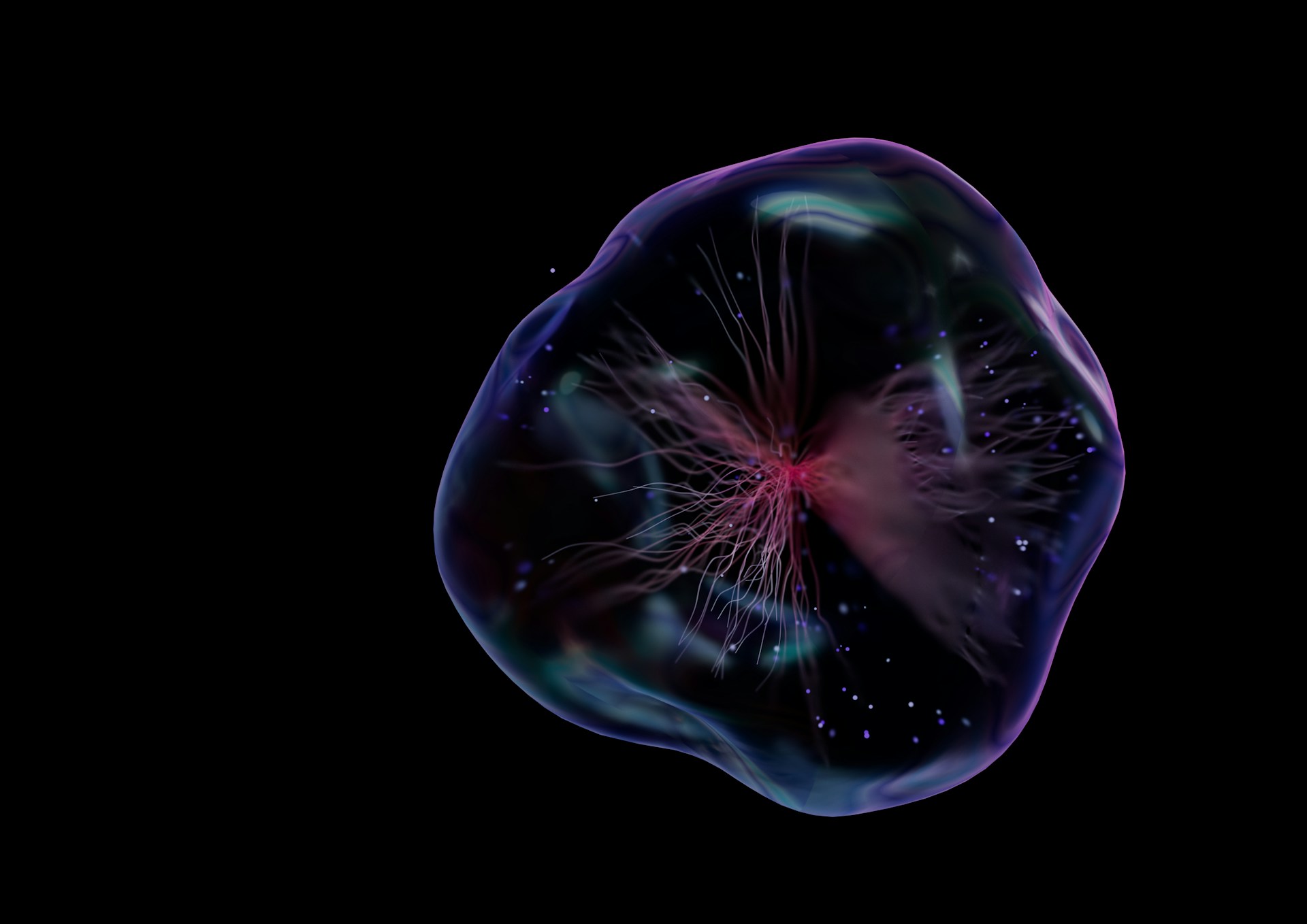Cell cultures help us study our bodies in the lab. With them, we can grow our own cells in the lab and observe how they react to any biophysical stimulus. Most commonly, we grow these cultures with a Petri dish or a cell culture plate. These cultures are known as 2-dimensional (2D) cultures because the cells grow in a monolayer attached to a plastic surface.
Although 2D cultures occur within a 3-dimensional (3D) space, the monolayer poses many limitations for accurately capturing what goes on with the cells inside us, or in vivo. The monolayer format disturbs cellular morphology away from those observed in vivo. Monolayers also gain unlimited access to nutrients essential for growth. While that ensures cell growth, it limits the means through which cellular responses to stress and the heterogeneity of cellular communities can be assessed.
3D cultures can address many of those limitations. From organoids to spheroids and other formats, growing cells in a 3D format can better recapitulate in vivo cell biology and physiology. These latest developments are especially welcome given the FDA’s move to phase out animal testing before human clinical trials.
But how do you prepare these cultures quickly enough while still replicating biological structures in vivo? LifeTaq’s answer is the Oli-MAT.
In this article, I interview Manfred Taschner, CEO and founder of LifeTaq-Analytics GmbH. The company recently developed the Oli-MAT, an automated machine that produces reliable 3D cell cultures in the lab. They have already produced lung cultures with the Oli-MAT, and the sky’s the limit on what other kinds of 3D cell cultures they can produce.
Read on to learn more about the Oli-MAT in this edition of Innovation AveNEW interviews.
The interview
About 3D cell culturing
PN: Historically, we’ve spent a lot of time working with 2D cultures when mimicking human cell dynamics. What does a typical 2D culture look like, and how do they differ with how cells are organized in our bodies?
MT: 2D cultures are typically prepared on Petri dishes or well plates. We call these cultures a monolayer because the cells form a single layer on top of the vessel where they proliferate. These cells, however, look nothing like the cells that comprise human and animal tissues. The differences observed among cells in 2D models mean that any interactions that take place between those cells and their environments do not reflect those that arise in our bodies. That becomes a huge drag on how we understand human physiology.
PN: Aside from the cells and their interactions, what else do 2D cultures miss?
MT: Cells in culture also require different scaffolds where they can stick and form structures like those observed in our bodies. Our cells don’t stick to plastic vessels like a well in a 96-well plate or a Petri dish. Without a proper scaffold, we also won’t know how cells interact with various drug candidates. The dynamics we observe in terms of cellular metabolism also require the third dimension of depth, something that 2D cultures cannot afford.
PN: I can see that so many aspects of cellular physiology are missed when we study with 2D cultures. Which, you believe, is why we need 3D cultures. What kinds of 3D cultures can scientists prepare now, and what other kinds could we prepare in the future?
MT: That’s the million-dollar question for cell culture as a discipline. Right now, we have several 3D culture systems out there. These can be divided into two types of 3D culturing: scaffold techniques and scaffold-free techniques.
- Scaffold techniques: These 3D cultures use a polymer that crosslinks into a platform for cells to grow and interact with each other. We can use natural or synthetic polymers, and gels or hydrogels. Either way, such a system allows biomolecules to diffuse through the culture and mimic how cells receive nutrients and interact with other cells. Bio-printing and organ-on-a-chip systems are great examples of the kinds of 3D cultures you can make with scaffold techniques.
- Scaffold-free techniques: With scaffold-free techniques, the resident cells self-assemble and interact with neighbouring cells to form 3D-like structures. You can think of organoids and spheroids here.
About the Oli-MAT
PN: You and LifeTaq have developed a scaffold-based approach for 3D cultures that refines the transwell. Could you tell us more about how that works?
MT: Sure. With transwell cultures, we first have a plastic insert that contains a membrane. Here, cells can get attached to form a scaffold on top. This setup lets cells feed from the nutrients in the surrounding medium. This platform also makes it easy to introduce drug candidates on top of the culture, so you can evaluate how your cell cultures will react. You can check for toxicity, adverse drug reactions, and diffusion rates as well.
PN: It sounds like we’re well on our way to developing alternatives to animal testing, given recent developments in the FDA.
MT: It will still take a while to fully replace animal trials for good, despite countries like Canada aiming to do so by 2035. However, we’re still heading in a good direction. Many 2D and 3D culture approaches have already matured or are maturing as we speak. With so many choices, scientists have much to consider before they narrow down the models that work best for their research.
PN: Speaking of which, how should a scientist determine what kind of models to use for their research?
MT: To answer that question, we must return to the basics of the scientific method. What cell models you decide to use will fully depend on the research questions you’d like to answer. We can tease apart these questions further by examining:
- Which aspects of human physiology to mimic: Each of our body parts operates in different ways to keep us alive. Mimicking those aspects of physiology will naturally require different models given their unique structures. If you’d like to mimic the human lung, then we suggest using a transwell model. Conversely, you should use organoids if you’re interested in liver toxicology testing.
- What regulatory requirements you need to meet: With whatever therapeutic you’re developing, you must also consider what regulatory bodies are looking for before they approve a drug for clinical trials. There are many changes going on, including the FDA preparing the Modernization Act 3.0, Europe with the three Rs (reduction, replacement, refinement), and Canada with Bill S5.
PN: What about cell culturing makes it hard to do?
MT: Standard procedures for maturing culture models can take at least a month, even up to 42 days. Now, if you had to do the culturing manually, you’d have a lot of people who can work different steps. With such a wide cast of people culturing the cells, you’ll naturally get a lot of variation in the cell and liquid volume transfer. This creates contamination risks and raises the risk of variation across experiments with your culture models.
PN: How does the Oli-MAT address the issues you mentioned?
MT: The Oli-MAT is a machine designed to automate the cultivation and maturation of 3D cell culture models. Automation removes much of the risks that come with manual labour when preparing and maturing cell cultures. With the Oli-MAT, you can put the cells into your system, setup the protocol, and establish quality controls for your 3D cultures. The only thing you have to do with our Oli-MAT is to place the materials and remove the wastes necessary to keep the cultures growing from time to time. Even with that, you’d only have to do it once every two weeks.
Better yet, our Oli-MAT can fit on top of a lab benchtop. With many other automated systems, there can be lots of devices. They then connect to a huge lab automation highway, be run by different softwares that pose compatibility issues, and take up substantial lab space. But with the Oli-MAT, we developed a compressed system that comprises all the required components to automate 3D culturing. And with the reduced lab space and compact size, we help customers save big both in lab space and in the cost of owning an Oli-MAT.
PN: With cell cultures, scientists also need to shake it to evenly distribute the media as they’re being incubated. How do you fit that function into your Oli-MAT?
MT: We managed to integrate this function thanks to magnetic levitation. Essentially, the machine contains a permanent magnet that levitates over a magnetic field that the user can control. This feature, in turn, grants up to six degrees of movement. The freedom that the technology affords means they can easily shake and tilt plates for the even distribution of solutions within the plates. When you add its compact design, it means we can fit this and several more functions within the Oli-MAT.
PN: You also mentioned the risk of contamination when manually preparing cell cultures. How does the Oli-MAT ensure that the 3D cell cultures are robust?
MT: Without sterility, no one can expect reliable cell culturing data. We ensure sterility in two ways. First, we prepared a liquid handling system that performs all the menial tasks of transferring volumes from one vessel to another. This minimizes the risk of sample contamination, ruining any cell culture experiment being done within the Oli-MAT. The Oli-MAT also implements three major quality controls. First, we can measure lactate levels, a proxy of cell death. We can also measure cell viability with the WST8 measurement. Lastly, the Oli-MAT can measure trans epithelial electrical resistance, a way to ensure that the epithelia remain intact.
Next steps for the Oli-Mat
PN: What are you hoping to develop next within the Oli-MAT?
MT: We can take the Oli-MAT in so many directions. Where we take the Oli-MAT will depend on what our customers are seeking the most. That can be a challenge. Any market changes can render any features we include obsolete if we don’t listen to our customers’ needs carefully enough. That said, we do have a few ideas of how we’ll continue developing the Oli-MAT:
- Self-cleaning: We’re planning to include several dedicated protocols so the Oli-MAT can clean itself. While the Oli-MAT houses an ethanol station and a PBS station, it remains the user’s responsibility to wipe their working spaces clean. We’re hoping that we can program the Oli-MAT to clean itself after completing a cell culturing protocol, standardizing sterilization procedures.
- Disease modelling: We’re also hoping to help researchers standardize protocols for generating healthy tissue. This ensures that we can prepare robust disease models and compare data properly across research groups. To do that, we’re planning on developing Oli-MAT’s ability to input specific conditions for growing diverse cell cultures, such as lung cultures.
By implementing these features, we hope to augment the services we’re already providing for pharmaceutical companies.
PN: Congratulations on being selected as an Innovation AveNEW Company at SLAS Europe 2025! How was the event, and how did it help you with developing the Oli-MAT and LifeTaq?
MT: We’re proud to be selected as an Innovation AveNEW company for SLAS Europe 2025. I visited last year’s SLAS Europe event in Barcelona, and I was already stunned by the high quality of participants. For us, exhibiting at SLAS Europe 2025 was a great opportunity to show our product and present the benefits of using it just before we enter the market in September. It takes much effort to talk to your customers and generate leads until you sell or rent the first machine.
With the exposure we’re receiving from you and other outlets, we have a massive opportunity to revolutionize the preclinical drug development process. Customers who work with us will end up at the forefront of automating 3D culture preparations and get a leg up on the competition, and we want to help more customers reach that goal.
So, being selected as one of the Innovation AveNEW companies came at a perfect time for us. I’m grateful for this opportunity that we can meet other players working with automated lab systems and forge potentially new collaborations as well.
Author
-

Paul Naphtali is a seasoned online marketing consultant. He brings to the table three years of online marketing and copywriting experience within the life sciences industry. His MSc and PhD experience also provides him with the acumen to understand complex literature and translate it to any audience. This way, he can fulfill his passion for sharing the beauty of biomedical research and inspiring action from his readers.
View all posts




